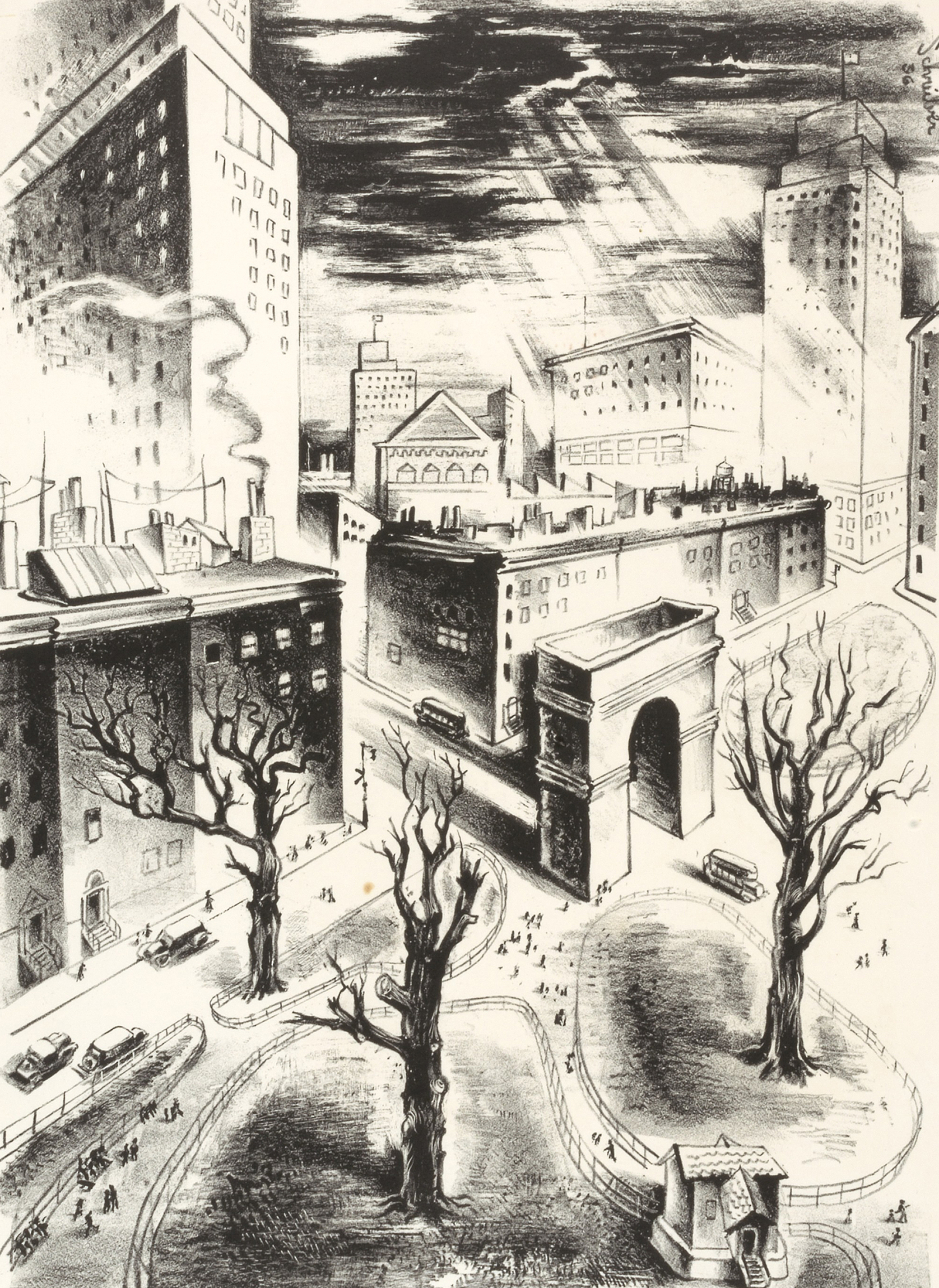
Washington Square, by Georges Schreiber. Smithsonian American Art Museum, Transfer from D.C. Public Library.
• “Telling people of color to ‘go back’ has a long and cruel history in this country…in 1919, during a period of widespread xenophobia directed at immigrants from Southern and Eastern Europe, the sheriff’s office in Lake County, Illinois, erected signs along the roads that warned: ‘This is an American town. Don’t criticize our President or our Government. If you don’t like our country, go back to your own country. If you have no country, go to hell.’” (HuffPost)
• The ghost stories Jefferson, Texas, won’t tell. (The Texas Observer)
• Looking back at the Palmer Raids. (The New Yorker)
• On No-No Boy. (T Magazine)
• Open a cat mummy…and you might find more than one cat. (Live Science)
• A case for reading The Age of Innocence right now. (New York Times Book Review)
• On the Cherokee art found in the dark zones of unnamed caves in Tennessee, Alabama, and Kentucky. (Archaeology)
• Loie Fuller, “priestess of pure fire”: “You should see her, she walks like a bird, but that bird is a duck.” (The Public Domain Review)
• On Helen Hunt Jackson’s political fiction. (JSTOR Daily)
• What happened to those who tried to cross the Berlin Wall? (Aeon)
• “ ‘That’s the only marker anywhere in the United States, as far as I know,’ Dread Scott said, that mentions the largest slave rebellion in United States history. He gestured toward one of the oncoming trucks, his voice shifting into a sardonic gear: ‘I’m pretty sure that guy didn’t read it.’ ” (New York Times)
• This week in obituaries: an American playwright, a British playwright, the first woman to light the Olympic flame, a novelist, an astrologer, a prolific short-story writer, a journalist, and a long-dead bicyclist with a penchant for colorful (and false) boasts.